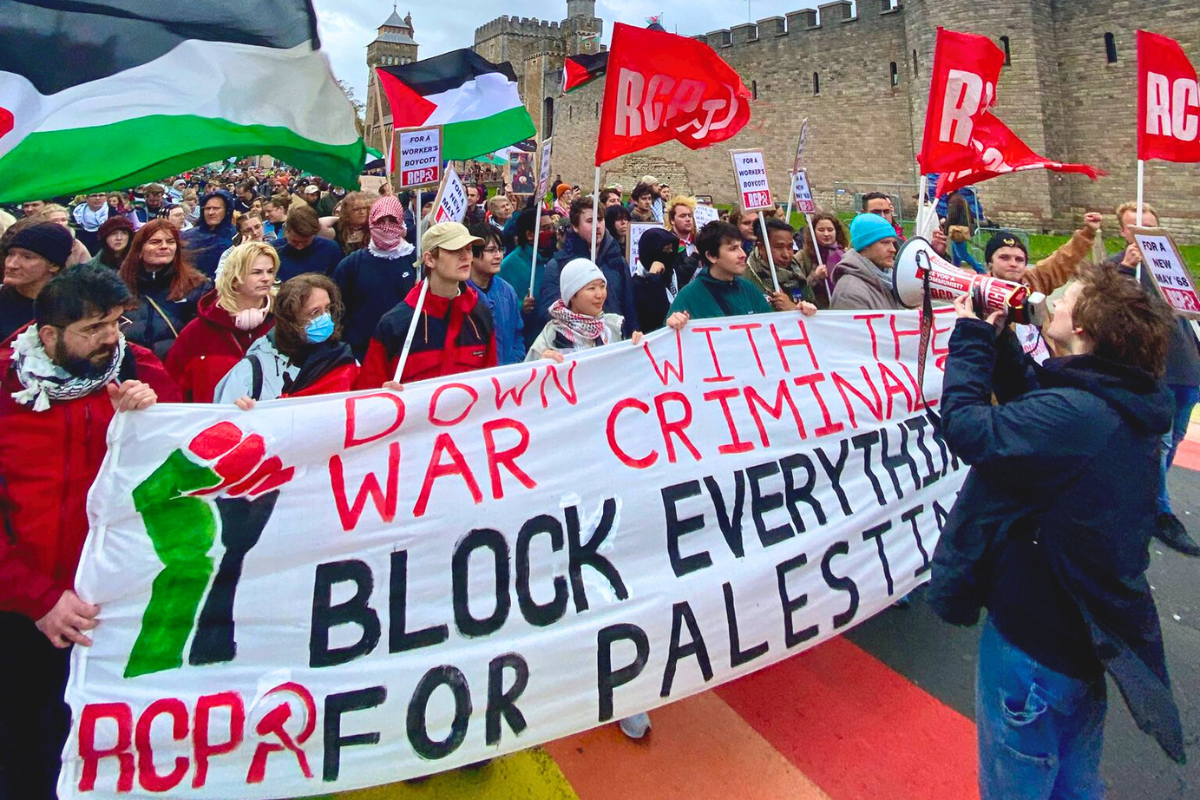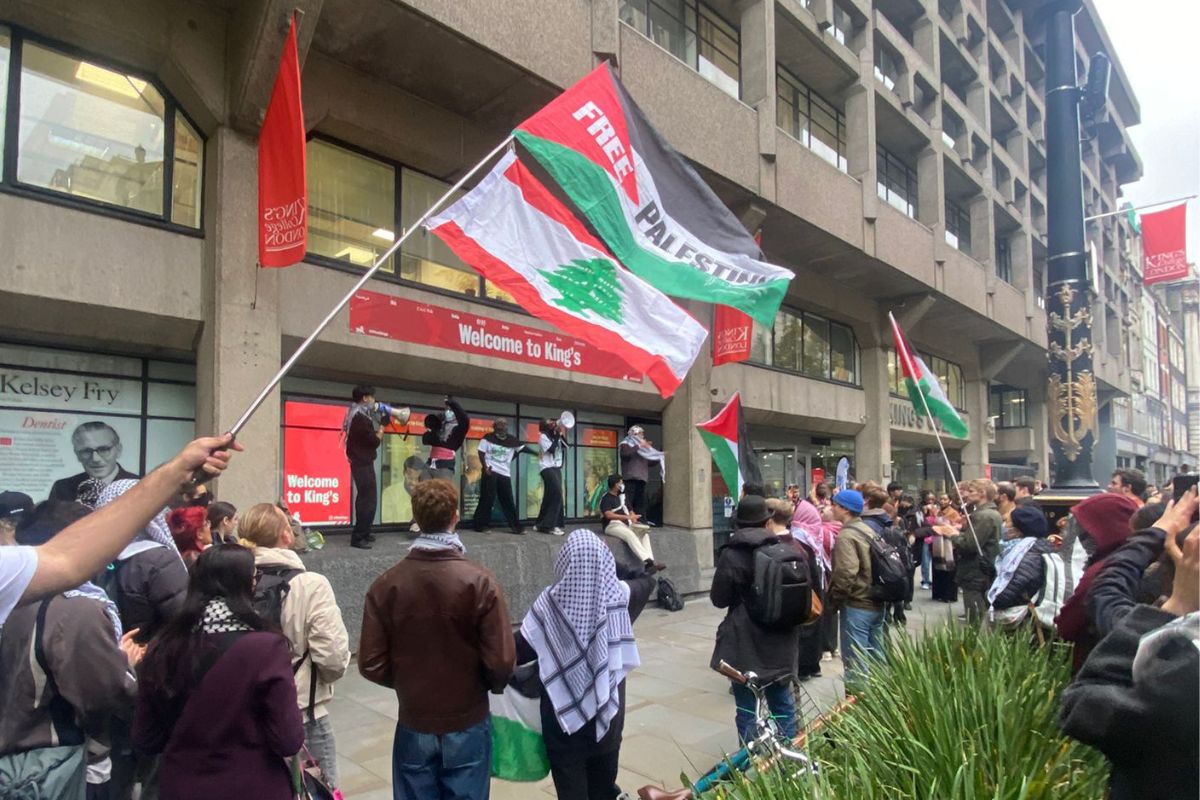After 7 months,
the occupation of the Hetherington Research Club at Glasgow University,
better known as the Free Hetherington, has come to a close. With
universities across Britain on the verge of a new term, two student
activists from Glasgow look at the history of the occupation and the
anti-cuts movement at Glasgow this year, and the lessons that the
student movement can take from it.
After 7 months,
the occupation of the Hetherington Research Club at Glasgow University,
better known as the Free Hetherington, has come to a close. With
universities across Britain on the verge of a new term, two student
activists from Glasgow look at the history of the occupation and the
anti-cuts movement at Glasgow this year, and the lessons that the
student movement can take from it.
The Hetherington Research Club, primarily a
social space for overseas, postgrad and mature students, had been closed
for around a year and was to be turned into office space by the
university at its time of occupation on 1st February this year. At this
time university management, headed by reviled Principal Anton
Muscatelli, was announcing course closures, mergers, cutbacks and
redundancies in departments across the University. The occupation did of
course face opposition from the university establishment: management,
the leadership of the Students’ Representative Committee, and the
student unions, the Queen Margaret Union (QMU) and the Glasgow
University Union (GUU). Despite this, the occupation survived as an open
body that operated democratically, with open meetings held to discuss
issues or anti-cuts strategy and decisions only made after a vote. The
University and Colleges Union (UCU) on campus and several public figures
were extremely supportive of the occupation and would be vocal
defenders of it, such as MSP Patrick Harvie or author and candidate for
Rector A.L. Kennedy, and others who were visited for talks and socials,
such as poet Liz Lochhead, Billy Bragg and Ken Loach.
The 16th of February saw the largest
demonstration in Glasgow University history. Over 2000 students and
lecturers joined in protest at Muscatelli’s cuts and marched on the
senate buildings, attempting to drown out the meeting inside which would
push through £20million worth of cuts and also see the closure of
several courses including Anthropology, Slavonic studies and languages
(Glasgow being only one of two universities in Britain to offer Polish,
Russian and Czech), Nursing (rated the 2nd best school of
nursing in the UK) and the Department for Adult and Continuing Education
(DACE). All of these cuts came at the same time that Muscatelli – on a
larger salary than David Cameron – was to receive a pay rise. It is
obvious that, whether it is the City of London or the University of
Glasgow, the capitalist class will pull up the ladder behind them in
times of crisis no matter how overt their assaults are.
Muscatelli has only a few (albeit very
influential) allies. His opposite number at Strathclyde, Principal Jim
McDonald, is also pushing through similar measures; the University
Court stands behind him and he also has the ear of Scottish First
Minister Alex Salmond. However, the UCU is ardently opposed to him.
Glasgow UCU passed a vote of no confidence in Muscatelli and the Court
in March – 200 backed the motion, two abstained. There were no votes
against. Such militancy and unity are the best weapons in the arsenal of
the working class in this epoch of class struggle.
The occupation has also faced physical attacks
from the right-wing of the university. The GUU has traditionally been
the union of choice for reactionary politics on campus, as evidenced by
its large presence of Young Conservatives and Labour right-wingers, its
continuing hostility to the anti-cuts movement and its support of the
openly Tory Stuart Ritchie for President of the SRC against the
socialist James Foley, an election that was won narrowly by Ritchie amid
vote rigging on the part of the GUU. On the 6th of March, in the early
hours of the morning, a drunken crowd descended from the GUU – including
several of its board of management – breaking into the occupation and
trashing the inside whilst people slept and then violently assaulted two
of the occupiers on the street outside. The GUU distanced itself from
the attackers but little action was taken against them by the union or
the university management, highlighting the cosy relationship of these
institutions.
Then on 22nd of March came the
now-infamous eviction attempt. A disproportionately large and heavy
handed police presence was called onto campus by the Uni Court: around
100 of Strathclyde’s finest, 16 police vehicles and a police helicopter
were all employed to intimidate and overwhelm, with 3 anti-cuts
activists arrested – one of whom was initially refused medical
assistance by police despite being injured. All were arrested unjustly
on charges of assaulting police officers, and the charges were later
dropped. The crowd protesting against eviction grew from around 20 to
about 200 as passing students rallied. The demonstration grew possibly
up to 500 as those who had been watching events unfolding joined the
crowd and then marched on to the unguarded university Senate rooms. A
deal was struck – if the occupiers left the Senate rooms, they would be
free to re-enter the Hetherington. The occupation continued on through
the exam period and the summer months, until a deal was proposed in July
by university management – a promise, in principle, to stop any further
course closures if the occupiers left the building. After several
meetings held to discuss this, it was agreed democratically that the
Glasgow University occupation of the Hetherington Research Club would
end on 31st August, some 7 months after the occupation began.
It was an occupation that had been conducted democratically and always
with the consent of those involved, so it was fitting that it should end
in the same manner, not by simply dying out after it had outlived its
usefulness or amidst a violent eviction that produced no gains. It was
too late for the courses closed by the Senate prior to this. However, it
meant that proposed course mergers and possible course closures that
had been mooted up until that point were sidelined, a terrific victory
for the occupation and something which the anti-cuts movement on campus
and across the city as a whole can take real strength and confidence
from.
So what did we learn?
The period has seen an increasingly close link
between workers and students at the university. Following the eviction
and the longstanding support of some UCU members the Glasgow University
branch came out in full support of the occupation and condemned
management and the police for their handling of the eviction. The UCU
strikes on the 17th and 24th March showed that an
occupation could be a useful base for organising and supporting picket
lines, with the Hetherington being used extensively for this purpose.
Hot drinks and food were brought to picketers amid the Glaswegian rain
and picketing teams arranged inside. This should be kept in mind for any
long term occupation in future – that a (somewhat) permanent base can
be used very effectively as a point for organisation, liaising with the
UCU and even simple things such as tea, coffee, and a space to relax
after a day of picketing; all are invaluable morale boosters. In the
coming period, where an increase in industrial conflict is to be
expected, it would be wise that occupations of this nature are used to
their fullest extent to aid those in struggle.
However, it should be remembered that occupation
is naught but a tactic in a much broader conflict – it is not the end
of the class war if one building is filled with and ran by students for a
while. Anarchist and autonomist trends in the movement had a negative
and blinding effect on the occupation at times. A rosy-eyed and
sentimental attachment to the building developed, such as the idea that
we had created “our own space”, an alternate society, socialism in one
building – it had been forgotten that occupation is merely a constituent
part of struggle, not the entirety of that struggle. These anarchist
trends were also evident in meetings, with the ridiculous hand-waving
gestures of “consensus decision making”. All this succeeded in doing was
to encourage insularity and a feeling of a small isolated community in
what needed to be a struggle which reached out to the mass of students
who had marched against their courses closing.
On the March 22nd eviction, there was
widespread confusion, a reluctance to leave the building and even a
proposal by a small group that 200 or so demonstrating students should
try and break through the police barriers and fight their way back into
the Hetherington. What would happen after that is anyone’s guess, a
pitched battle with 100 heavily-equipped and extremely aggressive police
perhaps? Thankfully the decision to instead march on the unguarded
senate rooms gave occupiers a much more potent bargaining position,
which led to the occupation being resumed peacefully later that day. In
short, we must constantly be wary of sentimentality around what is
fundamentally a tactic and a form of struggle as opposed to an end in
itself.
With the SNP administration at Holyrood making
repeated cutbacks in all areas of education, and proposing a massive
hike in tuition fees for students from the rest of the UK, we can use
these experiences of struggle to fuel the fire of resistance to
austerity budgets in Scotland, and the lessons we have learnt from it
will help improve our ways of combating the cuts.






